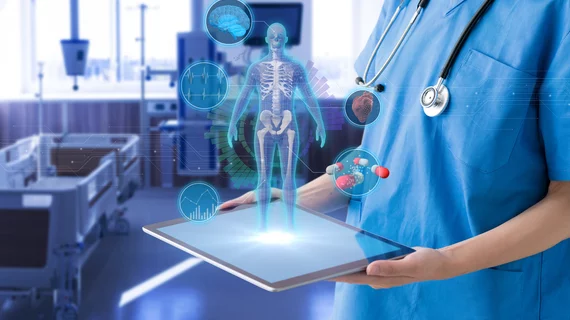Informatics experts share 4 key use cases for AI in radiology
For radiology to truly benefit from AI’s potential, the specialty must learn how to get the most information possible out of all available digital data. The authors of a new analysis published by the Journal of the American College of Radiology explored this subject in detail, describing use cases critical for radiology to successfully evolve in the years ahead.
“In 2013 and 2014, the RSNA Radiology Informatics Committee and American College of Radiology (ACR) Commission on Informatics, along with senior leadership from both societies, held two joint retreats to identify gaps in technology that may impose future limitations in our digital workflow,” wrote Marc Kohli, MD, department of radiology at biomedical imaging at the University of California, San Francisco, and colleagues. “All agreed that to ‘bend the curve’ of radiology practice, the informatics community and vendors need to develop standard, easy-to-use tools to describe the data associated with the clinical and business practice of radiology.”
According to Kohli and colleagues, these are four uses cases that can help radiologists ‘bend the curve’ moving forward:
1. Registries
So much digital healthcare data is now available that properly organizing it has become a top priority for modern researchers, a priority that also requires institutions to work together and combine their resources. The authors noted that registries can help keep such data in one centralized location, perfect for researchers to extract when needed—as long as all parties agree on a set of required data elements, of course.
The ACR hosts numerous registries, Kohli et al. observed, that are helping advance patient care on a daily basis. The ACR Lung Cancer Screening Registry, for instance, allows providers who perform CT lung cancer screening for Medicare patients to submit their data manually online.
“Some of the elements for LCSR come from the radiology report (LUNG-RADS score, recommendations), and others come from the EHR (smoking history),” the authors wrote. “The structure and content of the radiology report, as well as smoking history, varies from site to site. Due to this variability in how the data are represented, the process of extracting, normalizing, and submitting data to a registry is left to individual sites to implement using a variety of strategies including vended solutions, manual chart review and web page submission, and custom middleware.”
2. AI Research
Another related use case is research specifically focused on AI and how it can improve patient care. Institutions wanting to collaborate on AI research, the authors noted, often find themselves making a tough decision: either focus on the study at hand and get super specific with the data you are looking for or keep things more simple, allowing any data you collect to be reused down the line for other studies.
3. AI Product Validation
“As more researchers and companies enter the diagnostic space with AI algorithms, there is an increasing need for independent validation,” the authors wrote. “This is especially important from a regulatory perspective. To effectively regulate AI algorithms, the FDA needs to be able to scientifically evaluate data regarding commercial marketing claims.”
Validating solutions, of course, requires a whole lot of data—data the FDA can depend on.
“The data sets required for this validation have not yet been established, but would benefit from a shared data element definitions,” the team added.
4. Computer Assistance for Radiology Reporting
Structured reporting remains one of the most popular topics in imaging informatics. Patients, referring physicians and radiologists themselves can benefit from an environment where one specialist’s report isn’t always completely different from another specialist’s report. Digital healthcare data and AI can work together to help get radiologists on the same page, which is also a key aspect of successfully implementing clinical decision support systems.
“Having a reusable framework to deliver and maintain decision support content would be valuable for the radiology community,” the authors wrote.

